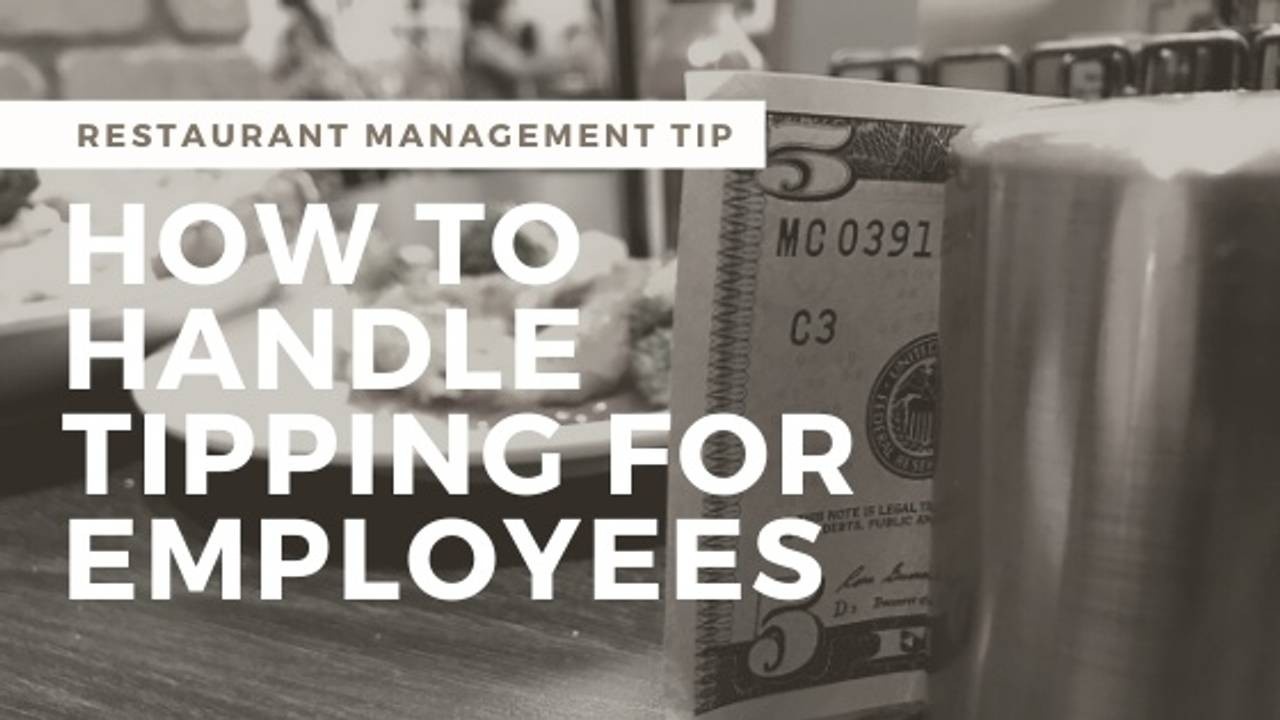Restaurant Business Tip Methods

One of the most repeated questions in my Restaurant Transformation Intensive group coaching program from newer members is questions about restaurant tipping policies. And while this is mainly a member driven discussion, I want to share my view on restaurant tipping policies, which has changed over the years. Watch this video, or scroll down to read, and I'll share with you my views and transformation on restaurant business tip methods.
First, let me share with you, I'm very old school. Very. My thought process stems from growing up in the restaurant industry in the 1980s and the 1990s. When it comes to divvying up tips among staff, I had some very old school thinking that needed to change. When I was a restaurant employee, I never believed in tip pooling, other than behind the bar. Somebody worked the service well, so the others could work the bar. In this case, we shared our tips. We were a team.
If I were working alone, the last thing I would want is to share my tips with that subpar performing server who is walking and only took a few tables. When I’m hustling my butt off and giving great service, I deserve the tips. In some cases, my thought process was very selfish. It's all about my performance. I can make more money than anybody else.
My second old school thinking was that growing up, when fast food restaurants really started to take off, I can remember driving 30 minutes to go to a McDonald's because it was in our town. Well, in any quick serve restaurant back growing up, tipping was not customary. When there was a tip jar on the counter with the handwritten word that says, TIPS, I felt like it was a begging jar because there wasn’t hustle and service like in a full-service restaurant. In a quick-service setting, all I saw was someone grabbing a burgers and fries, throwing them in a bag and handing it to me. So again, a little backward thinking, not truly understanding what hospitality meant in our industry back then.
Both things stayed with me as a manager in the industry, but so much about running a restaurant has changed over the last 40 plus years. When you think about this, when I grew up in the 1980s and got my first job, minimum wage was $1.35 an hour. Today, in many places across the country it is $15 an hour. If I look back, just about everybody was a tip credit state where you could pay somebody way below minimum wage because their tips brought them up or over a minimum wage. Well, tip credit states are almost extinct.
Rents have skyrocketed from the old days, a lot having to do with chains who came into markets and were willing to pay double the rent to secure a place.
Food cost has exploded like an atomic bomb on your restaurant’s P&L. Customers used to walk in the door with cash in hand. Remember, they had a wallet and greenbacks they'd pull out. Today, 90 percent or more of your receipts are credit cards, which means the credit card companies are taking their 2–3 percent out of our back pocket.
The industry went from green paper and an adding machine to now needing software. We need third-party delivery services and all these things are pulling from your margins. Plus the needs of employees, have changed. They want more than a paycheck. They want to feel a part of something bigger, a part of a team.
When you look at all of these factors, my views on tipping policies behind the scenes have changed. All my backward thinking needs to be swept into the garbage pail.
My restaurant owner members have taught me what is starting to make things work better in the restaurant. When a customer swipes their card and is asked if they want to tip, no matter the type of restaurant, the customer gets to decide. It’s more customary to tip in a quick-service restaurant.
When it comes to tip pooling, it started with the intention of pushing minimum wage increases off onto the guest to help the whole restaurant, making it so the owner can afford the higher minimums. Minimum wage is again coast to coast and then across the country after the pandemic, most everybody's paying more than that. Tip pooling with the entire restaurant, other than managers, of course, is becoming more and more popular because it allows restaurants to recruit better employees, keep better employees for longer in both front of house and back of house.
Now we're seeing people who are paying really healthy wages hourly, but also showing the benefit of working here that you may make $4, $5, even $6 more an hour more than at the restaurant down the street because of tip pooling. When you stretch these tips as far back as to the cooks, your restaurant becomes a more attractive place to work.
You'll ultimately have to decide what fits best for your restaurant, whether it's tip pooling or going individually. Just know that it's something that's very important to your restaurant's future. To figure that out, you have to know your company culture, your future plans, and your current team members and how you can adjust because things have changed.




